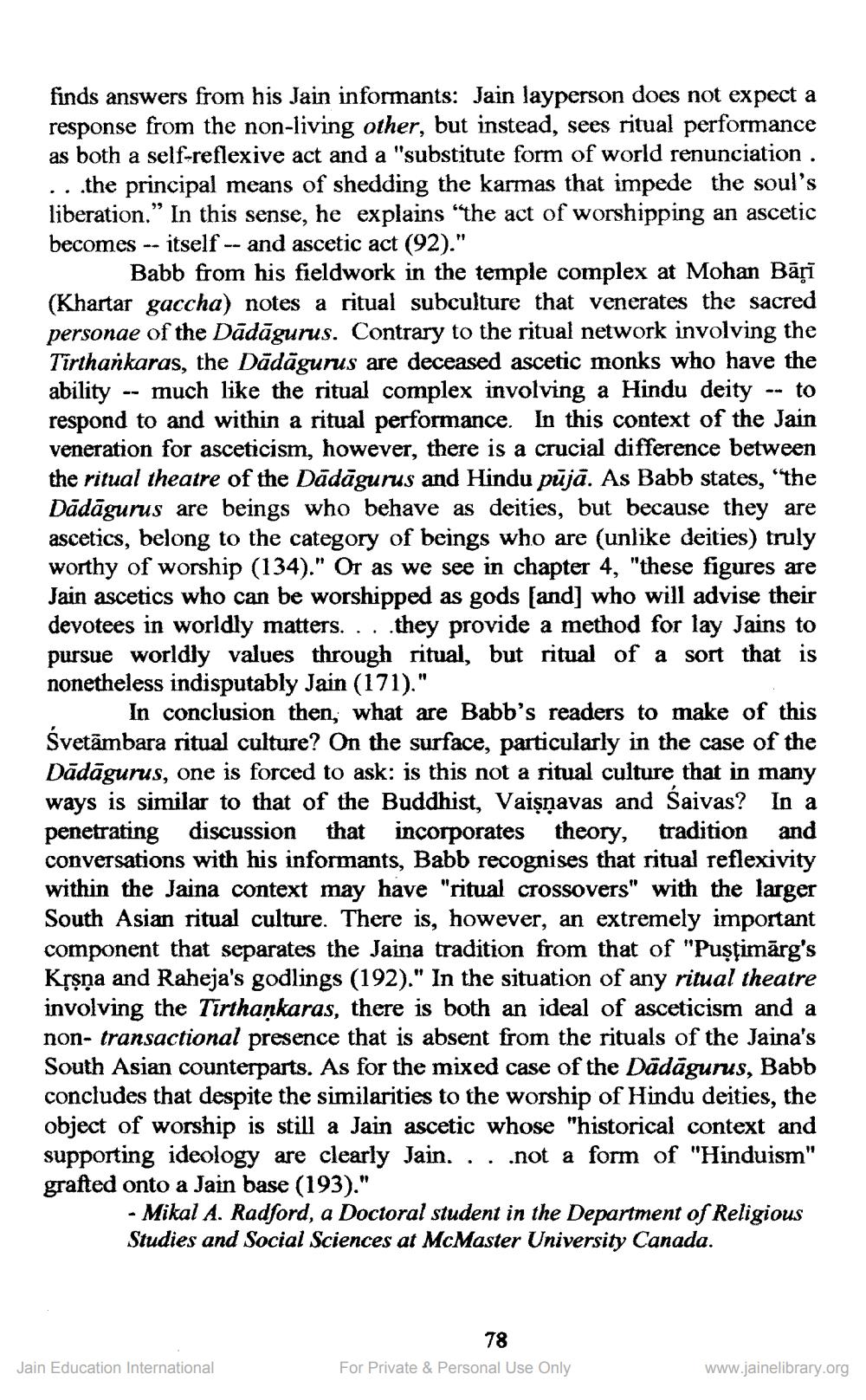________________
finds answers from his Jain informants: Jain layperson does not expect a response from the non-living other, but instead, sees ritual performance as both a self-reflexive act and a "substitute form of world renunciation. .. the principal means of shedding the karmas that impede the soul's liberation.” In this sense, he explains the act of worshipping an ascetic becomes -- itself -- and ascetic act (92)."
Babb from his fieldwork in the temple complex at Mohan Bārī (Khartar gaccha) notes a ritual subculture that venerates the sacred personae of the Dādāgurus. Contrary to the ritual network involving the Tirthankaras, the Dādāgurus are deceased ascetic monks who have the ability -- much like the ritual complex involving a Hindu deity -- to respond to and within a ritual performance. In this context of the Jain veneration for asceticism, however, there is a crucial difference between the ritual theatre of the Dādāgurus and Hindu pūjā. As Babb states, "the Dādāgurus are beings who behave as deities, but because they are ascetics, belong to the category of beings who are (unlike deities) truly worthy of worship (134)." Or as we see in chapter 4, "these figures are Jain ascetics who can be worshipped as gods [and] who will advise their devotees in worldly matters... they provide a method for lay Jains to pursue worldly values through ritual, but ritual of a sort that is nonetheless indisputably Jain (171)."
In conclusion then, what are Babb's readers to make of this Svetāmbara ritual culture? On the surface, particularly in the case of the Dādāgurus, one is forced to ask: is this not a ritual culture that in many ways is similar to that of the Buddhist, Vaişņavas and Saivas? In a penetrating discussion that incorporates theory, tradition and conversations with his informants, Babb recognises that ritual reflexivity within the Jaina context may have "ritual crossovers" with the larger South Asian ritual culture. There is, however, an extremely important component that separates the Jaina tradition from that of "Puştimārg's Krşņa and Raheja's godlings (192)." In the situation of any ritual theatre involving the Tirthankaras, there is both an ideal of asceticism and a non- transactional presence that is absent from the rituals of the Jaina's South Asian counterparts. As for the mixed case of the Dādāgurus, Babb concludes that despite the similarities to the worship of Hindu deities, the object of worship is still a Jain ascetic whose "historical context and supporting ideology are clearly Jain. . . .not a form of "Hinduism" grafted onto a Jain base (193)."
- Mikal A. Radford, a Doctoral student in the Department of Religious Studies and Social Sciences at McMaster University Canada.
78 For Private & Personal Use Only
Jain Education International
www.jainelibrary.org




